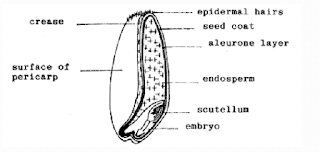Introduction to sugar technology
Sugar refers to the monosaccharides and disaccharide form of carbohydrates. However commercially sugar almost always refers to sucrose. There are three Main sources of sugar a. SUGAR CANE b. SUGAR BEET c. HONEY. Other sources include d. The corn syrup e. The maple syrup. 1.1.1 SUGAR CANE This is a tall perennial grass with tillers at the base and a branched stem. There three main varieties of sugar cane: The botanical name for sugarcane is Saccharium officinarium This has been known for over 12000 years. Its origin is New Guinea where it landed in the hands of Christopher Columbus. VARIETIES OF SUGAR CANES a. Wild/original variety which has thin stems, a lot of trash/ leaves and not self -cleaning. It has low sugar content. b. Noble variety which is self -cleaning and has high sugar content, thick stem and low fibre content. c. Hybrid variety which has intermediate properties. 1.1.2. The sugar beet Production of sugar from the sugar beet started in the 19th century. It originally ...
